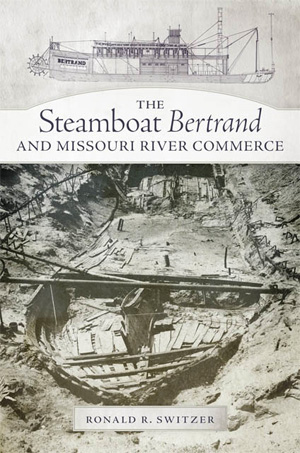 The Fort Pitt Block House
The Fort Pitt Block House
By Emily M. Weaver
Charleston: The History Press, 2013
160 pps., b&w photo illustrations
$19.99 paperback
The oldest structure in Pittsburgh, The Fort Pitt Block House, has truly stood the test of time. In “The Fort Pitt Block House,” Emily M. Weaver chronicles the complete history of the landmark from its use as the first line of Fort Pitt’s defense against the French and Native Americans to tenement housing and its continued use as a museum today. The Fort Pitt Society of the Daughters of the American Revolution obtained the Block House from Mary Schenley, of Schenley Park fame, in 1894 and the ladies vowed to protect it and tell its story for future generations. Little did they know they would have to go up against rising floodwaters, local politicians, the Pennsylvania Railroad, and Henry Clay Frick himself to keep it in its original place at the Point. Of particular interest are the many public efforts the ladies of the Fort Pitt Society made to preserve the Block House at a time when women did not have much of a voice in politics or government. Weaver’s tone conveys what a truly monumental struggle this was and the depth of their determination to keep it exactly where it stands today.
Reviewed by Liz Simpson, Assistant Editor, Heinz History Center
 The Steamboat Bertrand and Missouri River Commerce
The Steamboat Bertrand and Missouri River Commerce
Written by Ronald R. Switzer
Norman: University of Oklahoma Press, 2013
374 pps., 91 b&w illustrations and photos
$45 hardcover
Heinz History Center visitors have been learning about the Arabia, a steamboat full of supplies that sunk in the Missouri River near Kansas City in 1856. Although this was a common occurrence at the time, it was uncommon for these lost ships to be found and excavated. In this book, retired National Park Service archeologist and historian Ronald Switzer tells a parallel story, which he has been researching since 1969.
Almost 10 years after the Arabia sank, the steamboat Bertrand was also lost in the depths of the Missouri, this time 25 miles north of Omaha in the Nebraska Territory. On April 1, 1865, the Bertrand was en route from St. Louis to Fort Benton in the Montana Territory when tragedy struck. The steamboat was less than a year old when it hit a sharp snag (a fallen tree or tree branch) hidden in the 12-foot-deep water and sunk within 10 minutes. None of the 40 passengers and crewmembers were injured, but most of the 250 tons of cargo was lost.
Beyond the basics of the Bertrand’s structure and technology, Switzer’s book also considers 19th-century steamboat economics and commerce of the Upper Missouri River, as well as the various people involved in the journey. Intriguingly, he explores the lives of the officers, crewmembers, and passengers, before and after their trip on the Bertrand, as well as their motivations for traveling on the risky river. One chapter is even devoted to the “consignees”—the individuals on the frontier that the cargo was being shipped to, which contributes to his analysis of both economic and social history.
The majority of the book is devoted to the cargo onboard—the 300,000 artifacts were excavated in 1968, over 100 years after the Bertrand sunk. Switzer explains that the ship’s “cargo is a time capsule containing a wealth of mid-nineteenth century Americana”(111). Due to the oxygen-free environment, much of the cargo was preserved in its original conditions. Switzer breaks the cargo down into eight categories: food, liquor, and medicine; clothing and textiles; household goods, mining supplies; agricultural supplies; tools and building supplies; powder and munitions; and miscellaneous. This incredibly detailed list also discusses the manufacturing techniques and uses of these items.
Since railroads and trains mostly replaced the steamboat transportation industry by 1890, we are lucky to have the contents of the Bertrand and Switzer’s analysis today. Readers could have benefitted from some discussion on the excavation and preservation processes of the cargo—how difficult it was, how long it took, etc. Regardless, the book is full of information, photographs, and stories that are sure to interest a wide-range of people. “The Steamboat Bertrand and Missouri River Commerce” is a fascinating look into mid-19th century American frontier economic, social, and steamboat history.
Reviewed by Sarina Johnston, Duquesne University Public History graduate student
 The Backyard Brawl: Stories from One of the Weirdest, Wildest, Longest Running and Most Intense Rivalries in College Football History
The Backyard Brawl: Stories from One of the Weirdest, Wildest, Longest Running and Most Intense Rivalries in College Football History
By John Antonik
Morgantown: West Virginia University Press, 2012
352 pps., b&w photographs
$19.99 paperback
Perhaps the biggest casualty of conference realignment in major college athletics has been the destruction of regional rivalries. One of the longest-running football rivalry games to suffer that fate is the Backyard Brawl, the annual slugfest between West Virginia University and the University of Pittsburgh—two schools separated by a 75-mile stretch of I-79. Luckily, 104 football games produced an unforgettable legacy and countless stories, many of which are highlighted in the West Virginia University Press book, “The Backyard Brawl.”
Written by WVU athletic department veteran John Antonik, the book is a compilation of compelling nuggets from the series which dates back to 1895 and featured a myriad of upsets, blowouts, and fantastic finishes. Most impressive, though, is the “Who’s Who” list of coaches and players who have battled in the Backyard Brawl, including coaches like Bobby Bowden, Don Nehlen, Johnny Majors, and Jackie Sherrill, or players such as Major Harris, Pat White, Tony Dorsett, and Dan Marino.
With each passing season, hope remains among the Mountaineer and Panther faithful that the series will be resurrected, but until then, “The Backyard Brawl” ensures that this once-intense rivalry won’t be forgotten.
Reviewed by Brady Smith, Senior Communications Manager at the Heinz History Center and a proud WVU alum, class of 2004